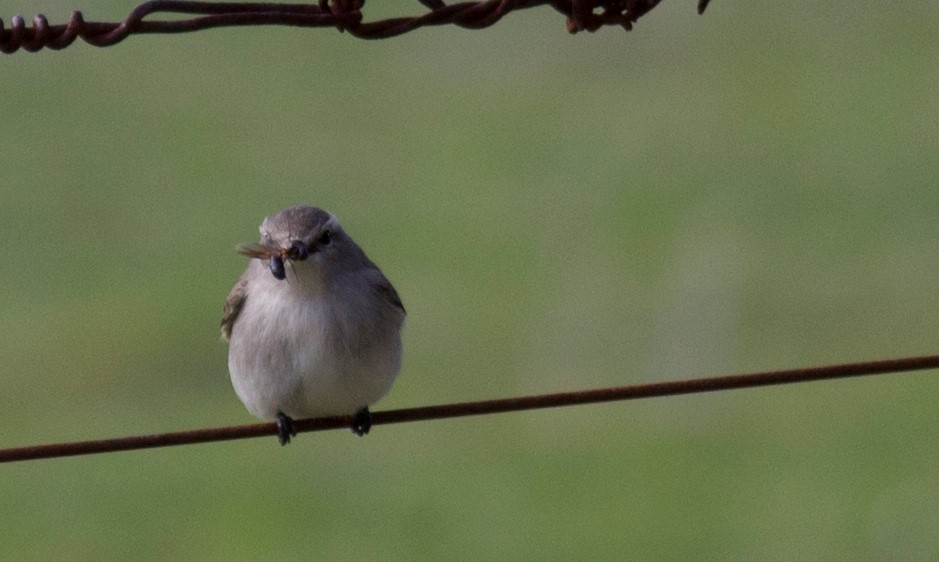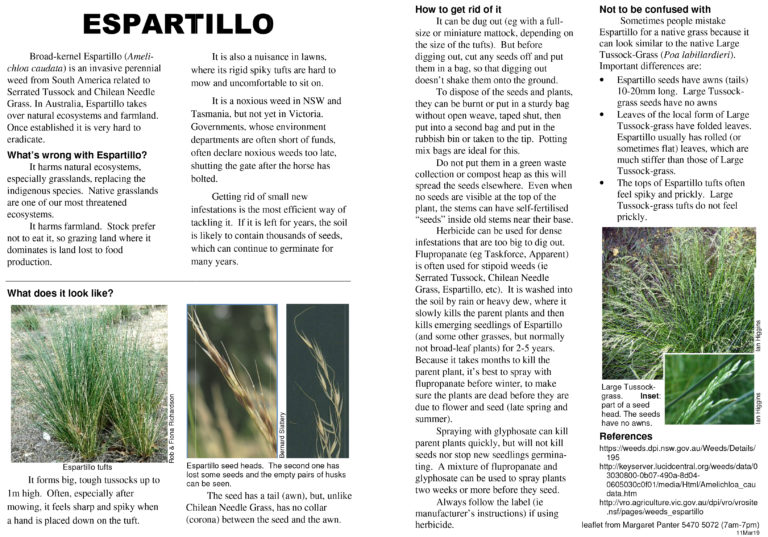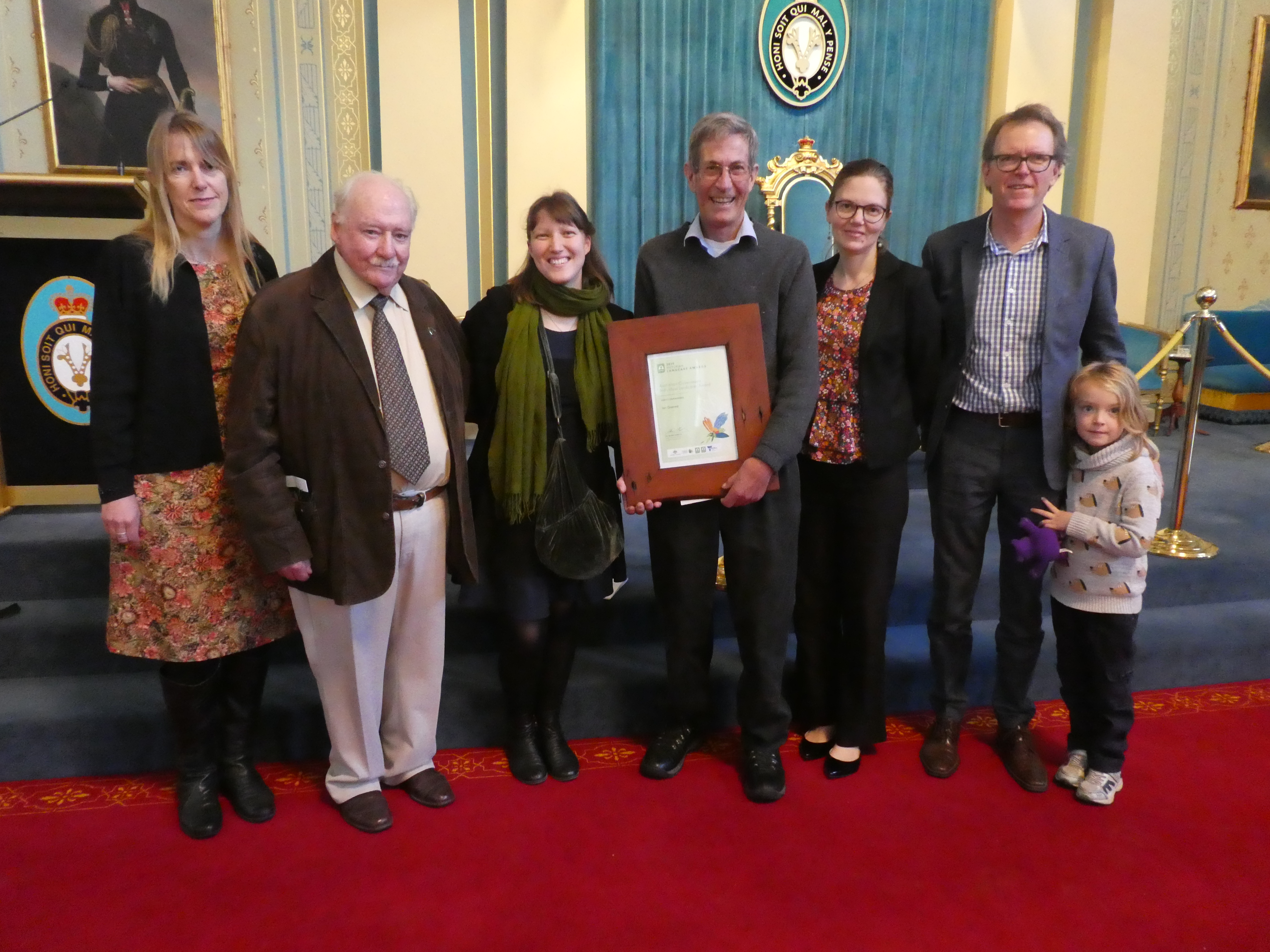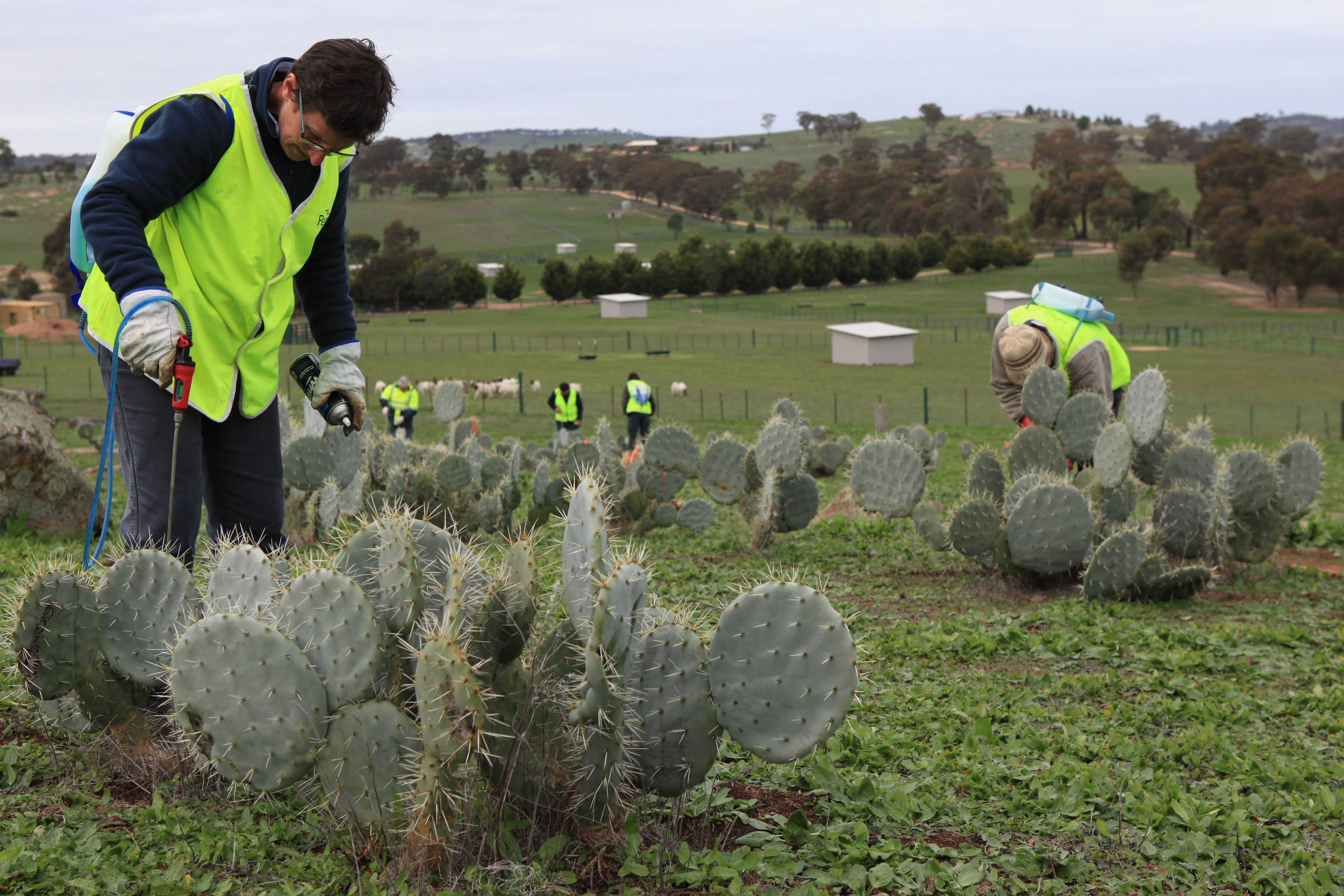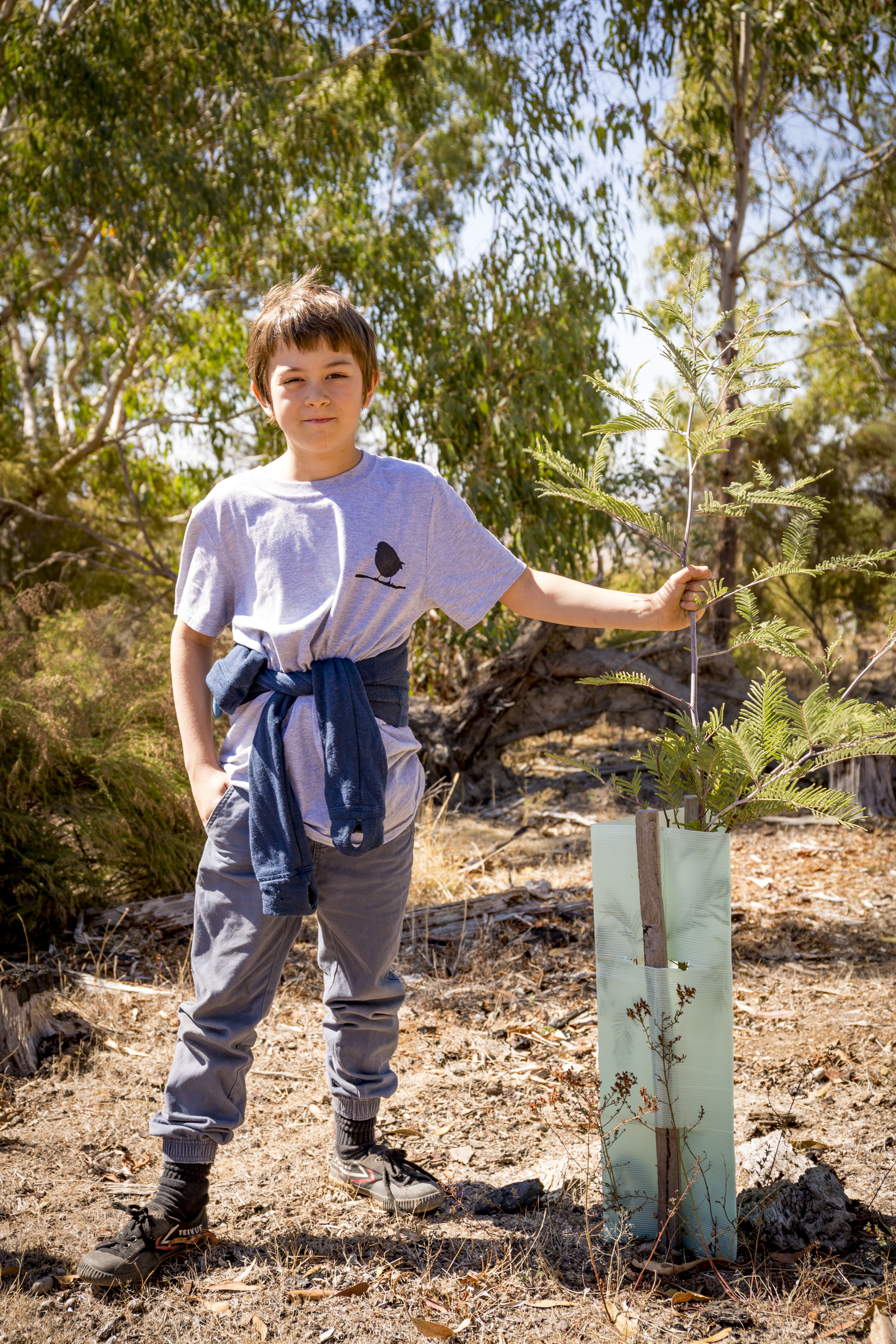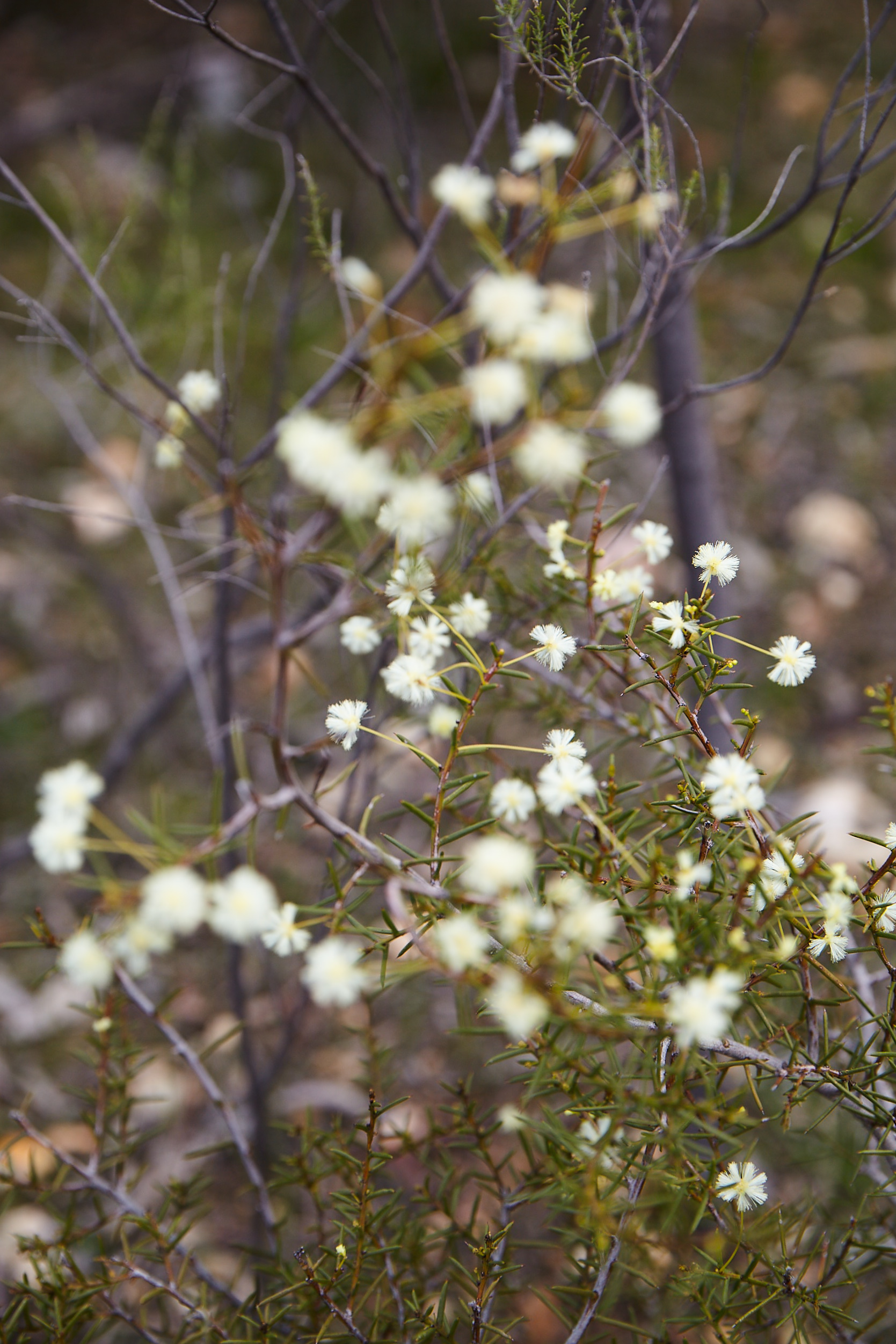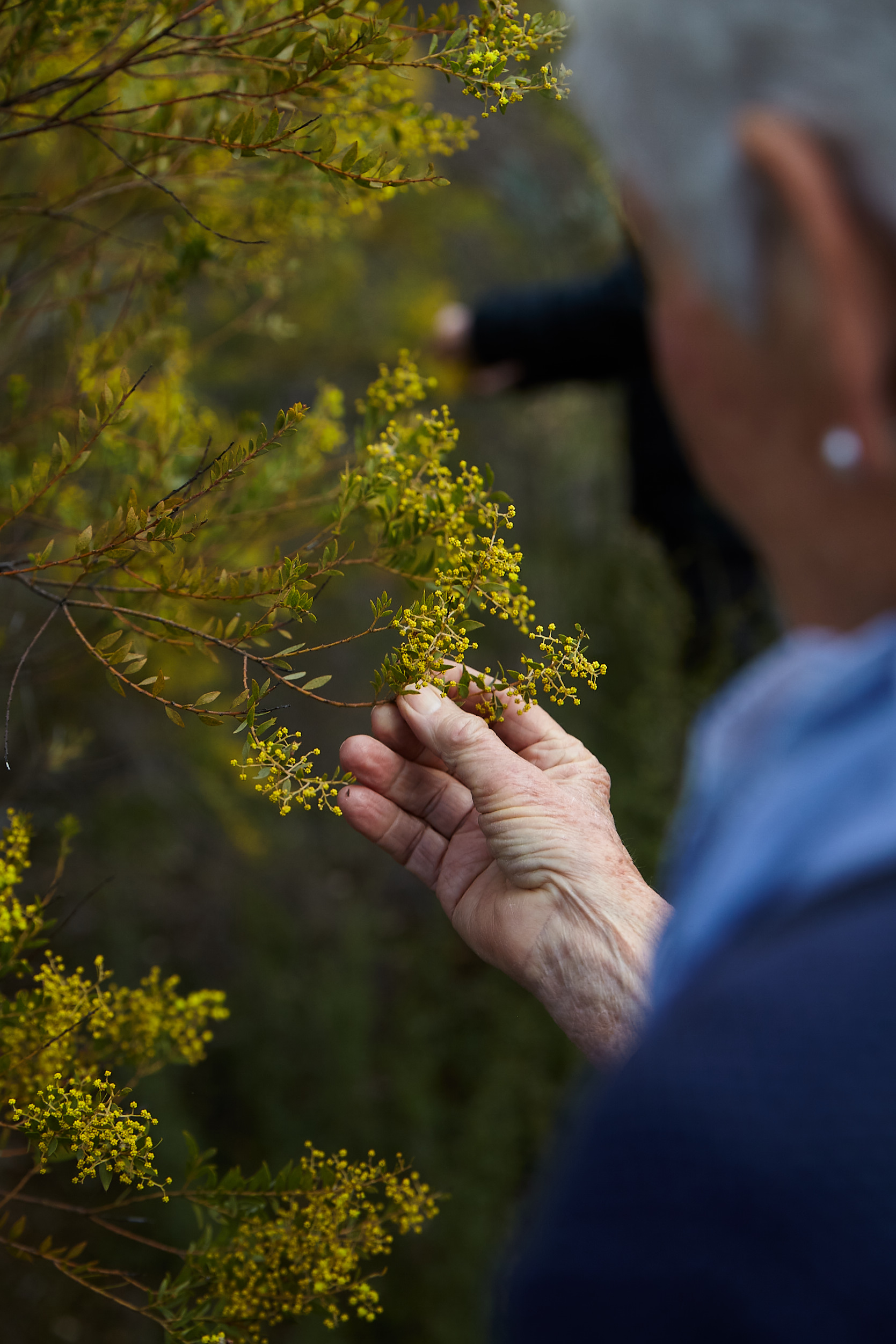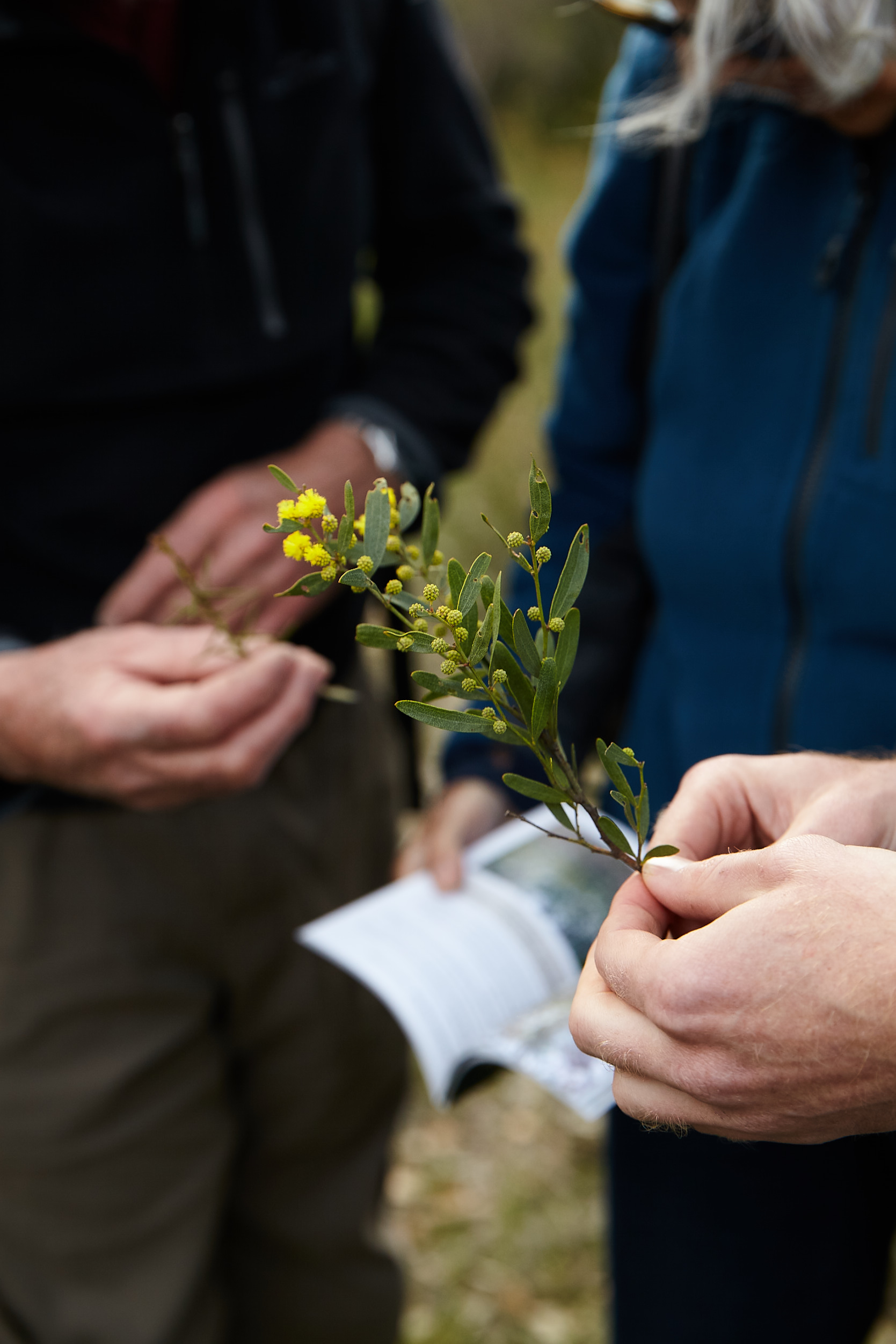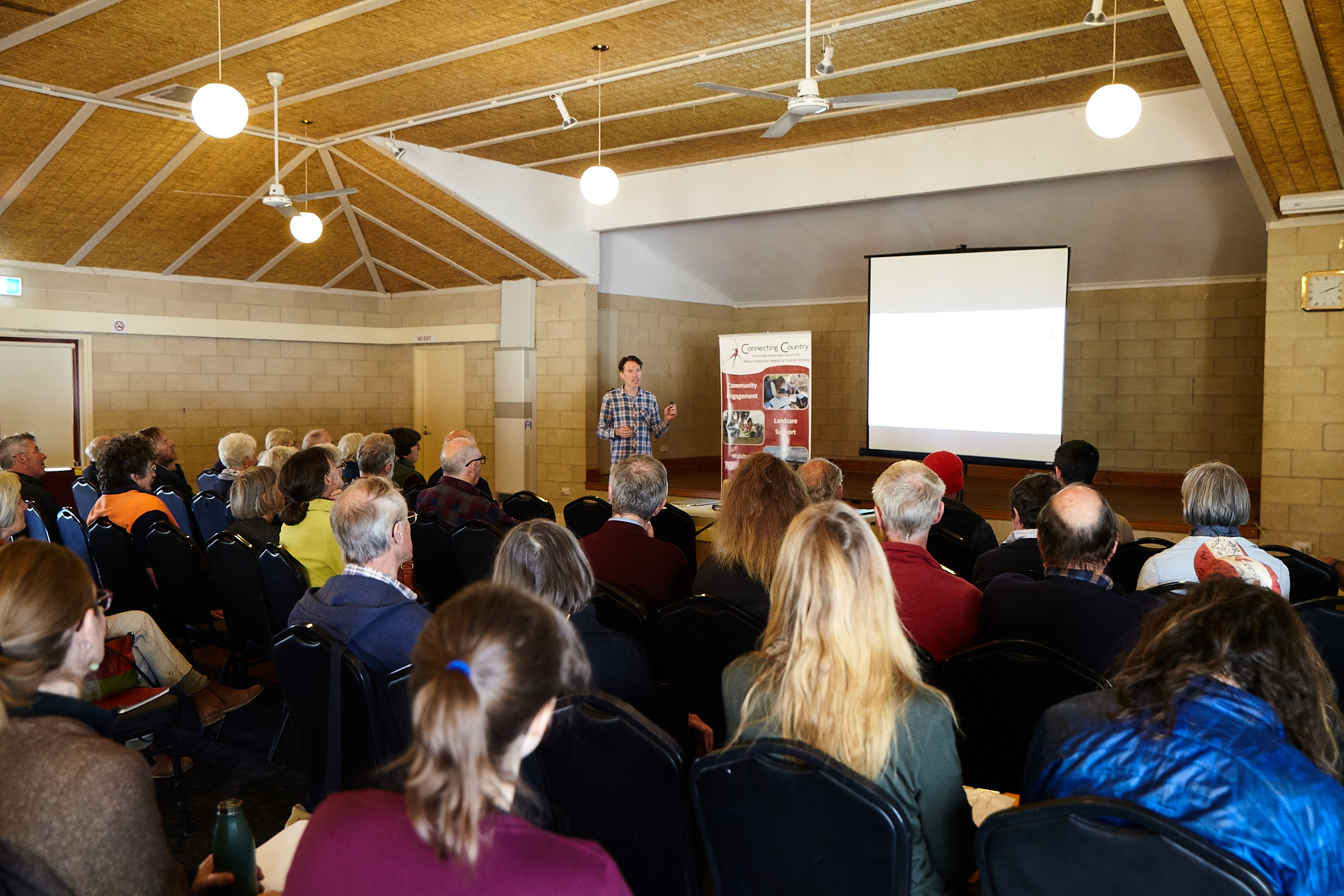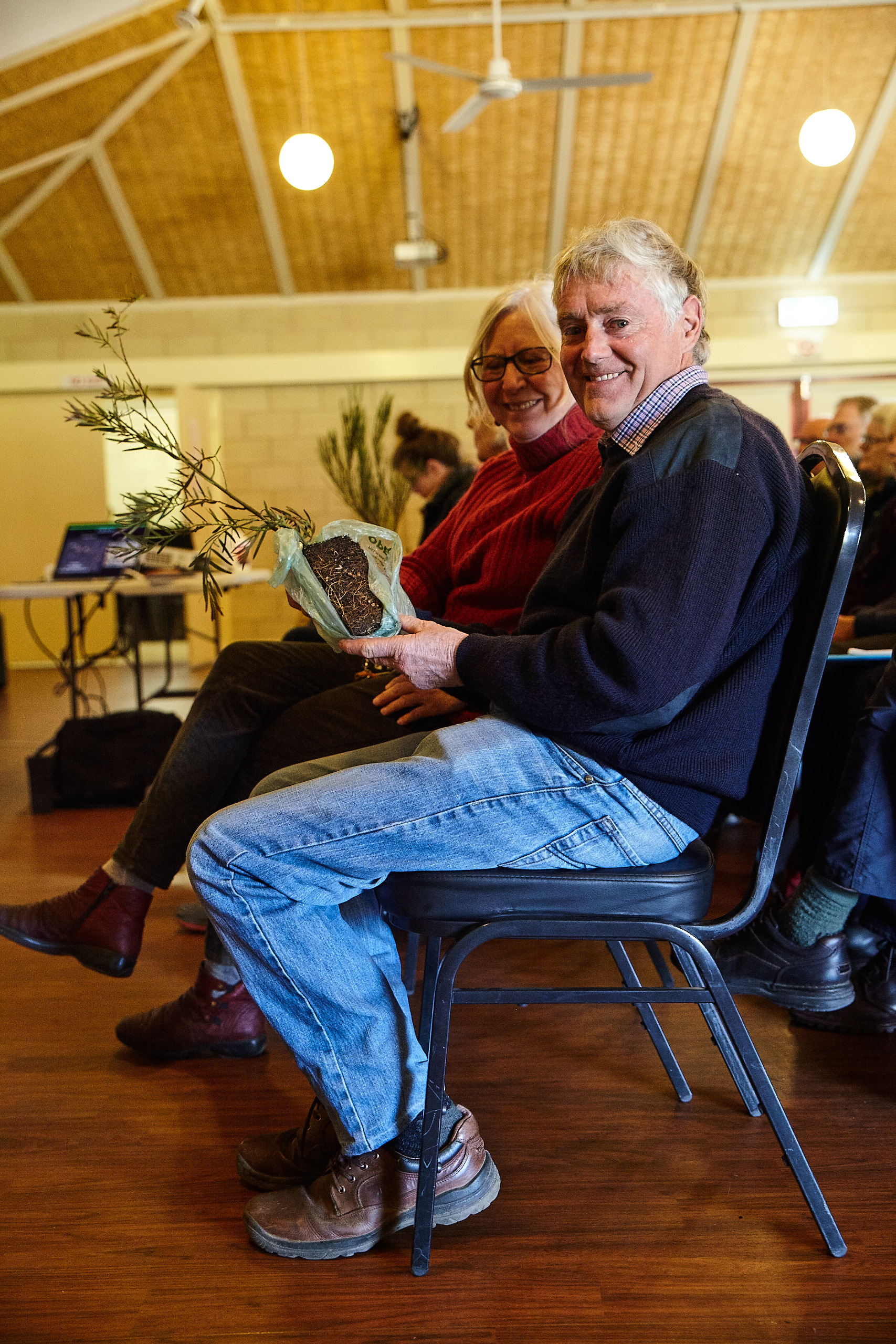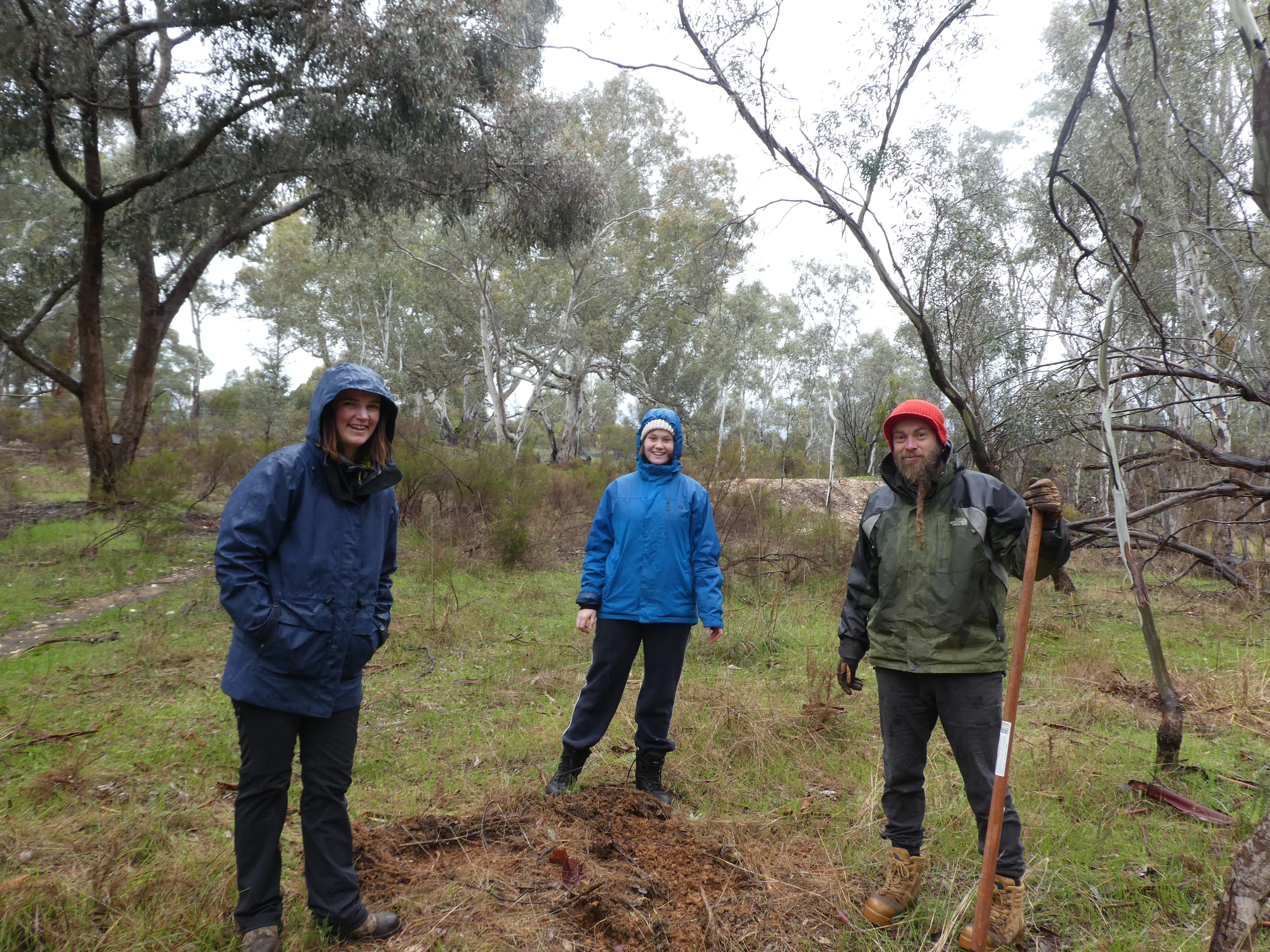Walking together towards Reconciliation: Weather knowledge of the KULIN Nations
Posted on 17 September, 2019 by Ivan
In some regions the Kulin Nations observed and named seven seasons of varying length in a year; each season happens when certain stages are reached in the natural world. The local Dja Dja Wurrung clans of the Kulin Nation, however, divided the year into six seasons.
The name Poorneet, meaning tadpoles, is given to the time in September and October when temperatures are rising, although there is still plenty of rain. Tadpoles are found in the water holes, and Pied Currawongs are louder and cheekier than ever. Days and nights are of equal length.
Plants like the Murnong (Yam Daisy) are flowering, so it’s time to dig for the yam tubers. Murnong, once abundant all over Victoria, rapidly became scarce after colonists brought what were soon vast numbers of sheep into the region.
Yams may make a comeback as a food source, since Aboriginal communities in East Gippsland and the NSW south coast have begun experimenting with yam cultivation. In his book Dark Emu, Bruce Pascoe tells how the very first records of European explorers and pioneers give evidence that Aboriginal people were farming the land. But to the newcomers, for whom the crops and agricultural methods were totally different from the familiar ones of home, they meant very little. All too soon, grain stores, tilled land, eel traps, houses and wells returned to the soil from which they had come.
Many thanks to Nalderun for this article. Nalderun is a service that supports the Aboriginal Community, led by Aboriginal people. Many people and organisations in the Mount Alexander Shire contribute to Nalderun; the name is a Dja Dja Wurrung word meaning ‘all together’. More information can be found at www.nalderun.net.au
Tim Low’s challenging ‘New Nature’ talk in Newstead
Posted on 17 September, 2019 by Ivan
Connecting Country and Newstead Landcare Group recently hosted a presentation by well-known author and biological scientist Tim Low. Tim attracted a packed room of 200 excited people to Newstead VIC. He guided us through some highlights from his recently revised book ‘The New Nature’, exploring the concepts of winners and losers in a world of human impact, changing climate and declining resources.
Tim said the attendance was one of the best he had been involved with and interest from the audience was outstanding. Tim described some surprising examples of how conservation and urbanisation can co-exist in some situations. A theme from the talk was that the conservation movement often talks about declining species, as it should, but this leaves many people unaware that some animals and plants are doing better today than ever before, because they have found ways to exploit us.
The ‘New Nature’ book reinforces the concept that animals don’t have any concept of ‘natural’ or ‘unnatural’ so they don’t automatically recoil from cities and farms. Sometimes they can do better in cities than in forests, and Tim suggested that Australian cities and towns are gaining animals over time. The audience was surprised to hear that Melbourne, Sydney and Brisbane are now home for peregrine falcons that nest on skyscrapers, and feed off pigeons and other city-dwelling birds. After the talk Tim took questions from the audience. He stressed that while we will have some winners from our changing planet, we must continue to work hard to prevent losing more species to extinction through habitat loss.
Many thanks to Frances Cincotta and Newstead Landcare Group for helping organise this event and doing some fantastic work. The event was supported by funding from North Central Catchment Management Authority as part of Connecting Country’s ‘Prickly Plants for Wildlife on Small Properties’ project, as well as a donation from Friends of the Box-Ironbark Forests.
Although the event was not recorded, there is link to a similar talk on Youtube below.

Tim Low (second from left) with Frances Howe, Frances Cincotta and Ivan Carter (photo by Connecting Country)
 Tim Low
Tim Low
Tim Low is a biologist and best-selling author of seven books about nature and conservation. ‘Where Song Began’ won several prizes, including the Australian Book Industry Award for best general non-fiction. It was praised in the New York Review of Books and recommended by Scientific American. ‘The New Nature’ was praised by Time magazine and listed by Who magazine as one of the books of the year. ‘Feral Future’ inspired the formation of a conservation group, the Invasive Species Council. Tim’s articles have appeared in Australian Geographic, The Weekend Australian Magazine, The Guardian and many other places. He works partly as an environmental consultant, and has a lizard named after him. He recently returned from a visit to Manchuria as a guest of the China Writer’s Association.
You can read more about Tim Low and view his Blog and website – click here
Youth grants for invasive species – closing 30 September 2019
Posted on 12 September, 2019 by Ivan
Connecting Country are keen to engage and involve youth in natural resource management activities across our region. This grant program supports youth-friendly initiatives with a focus on invasive pest and weed issues in Victoria. The program aims to increase young people’s participation in community environmental projects and encourage new ideas and innovations in the invasive species challenge. Funding can be used to support the engagement of young people in existing groups and initiatives, or to develop new youth-focused initiatives.
Applications close: 5.00 pm on 30 September 2019
Grants between $5,000 and $15,000 (excluding GST) are available.
Who can apply: Open to community groups, education providers and local councils, with a focus on projects that connect with young people and develop their skills, and deliver broader benefits for local communities.
How to apply:
- Read the program guidelines – click here.
- Contact the Grants Program Coordinator if you have questions about your application. Lauren Hull can be contacted on 0472 876 695 or lauren.hull@agriculture.vic.gov.au.
- Download the application form and complete all sections – click here.
Key dates:
- Successful grants announced – November 2019.
- Projects undertaken – November 2019 to June 2020.
Inspiration and ideas: There’s lots of projects underway that are boosting youth participation in environmental initiatives. If you’re looking for a starting point for your invasive species work, click here to see just a few projects that have been proposed.
More information: Contact Lauren Hull 0472 876 695 or lauren.hull@agriculture.vic.gov.au
The rumours are true: North Harcourt & Sedgwick Landcare is back!
Posted on 12 September, 2019 by Asha
You may have heard the rumors. And yes, they are true! After a five year hiatus, North Harcourt & Sedgwick Landcare Group are planning on planting on, and they need YOU!
Anyone who is interested is welcome to come along to a casual meet up, where they will be throwing a BBQ, giving away some free plants, and showing off some nest boxes.
When: Sunday 22 September 2019 from 12:00 pm – 2:00 pm
Where: Sedgwick Hall, corner Springs Rd and Sedgwick Rd, Sedgwick, VIC (scroll through photos below for a map)
RSVP: Appreciated via nhselandcare@gmail.com or their Facebook event – click here
To stay up-to-date, join their public Facebook group here: click here
Spring railway walk with Nuggetty Land Protection Group – 22 September 2019
Posted on 11 September, 2019 by Jess
Nuggetty Land Protection Group is planning a walk along the Nuggetty to Shelbourne Railway line. This was a branch line from Maldon through Nuggetty and Bradford and ends at the Shelbourne Station complex. The old railway line traverses farmland and Bradford Nature Conservation Reserve. The line was closed in 1960 after due to major fire damage. There will be a stop for lunch at the reserve to look at local birds, orchids and other flora. Binoculars, tea, coffee and water will be available.
Spring railway walk
When: Sunday 22 September 2019 from 9:30 am
Where: Park at Nuggetty Peace Monument, Nuggetty School Rd, Nuggetty VIC (turn right off Shelbourne Rd north of Maldon). A community bus will transport walkers to start of walk.
Bookings preferred: Jane Mitchell (0457 729 132) or Christine Fitzgerald (0419 347 408)
The walk is approximately 13 km. Bus will meet at intersections of roads if lift required and return you to your car or take you to next section of the walk. Please bring own lunch and water, and wear walking shoes, weather appropriate clothing and hats. The event will be cancelled if weather inclement. Please leave pets at home.
A new weed to watch: Espartillo
Posted on 11 September, 2019 by Ivan
Espartillo is an invasive perennial tussock grass that invades pastures, native grasslands and stream banks in temperate climates. Espartillo is unpalatable and has little nutritive value for stock. It has infested pastures, native grasslands, riparian areas and other areas of environmental importance. It is also known to invade lucerne crops.
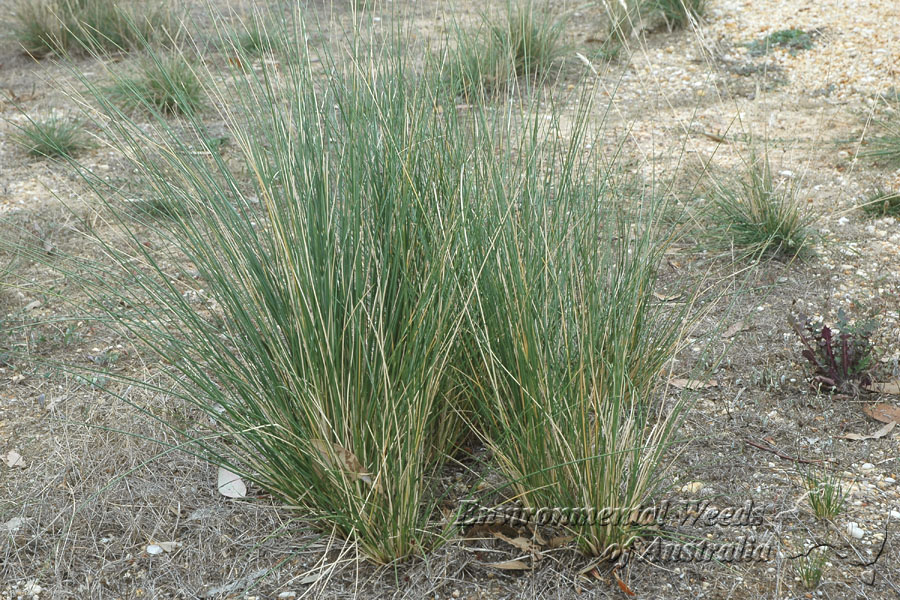
Espartillo is related to Serrated Tussock and Chilean Needle Grass (photo: Environmental Weeds of Australia)
Found along roadsides and disturbed areas, it can quickly encroach into neighbouring properties and bushland, particularly if there is a lot of bare ground. Once established, espartillo is difficult to manage and control. Native to Argentina, Chile and Uruguay, espartillo is considered a weed in New Zealand, United States of America, Italy and Spain. Even within its native range of Argentina it is a troublesome weed of lucence crops.

Espartillo can tolerate dry and harsh conditions and spreads rapidly (photo: Environmental Weeds of Australia)
Espartillo was first recorded in New South Wales in the 1950s and is present in a few localised areas. The concern with espartillo is that under the right conditions, it may quickly increase its range and density. It is now found throughout the Riverina, western slopes and plains regions of New South Wales. In Victoria, espartillo is mostly located in the central districts of Maryborough, Dunolly and Clunes where it continues to spread.
Local resident Margaret Panter produced an informative pamphlet about this invasive South American weed – see below or click here
Congratulations! – Victorian Landcare Awards 2019
Posted on 5 September, 2019 by Asha
Congratulations to receivers of the Victorian Landcare Awards! The awards were presented last Friday (30 August 2019) in a ceremony at Government House in Melbourne. Our local winners included:
- Malmsbury District Landcare Group – Winner of the Australian Community Media Landcare Community Group Award.
- Harcourt Valley Landcare Group – Highly Commended for the Australian Community Media Landcare Community Group Award.
- Ian Grenda – Highly Commended for the Australian Government Individual Landcarer Award.
On the day a lovely short video was also filmed called ‘I care, We care, Landcare’. To watch the video on YouTube – click here
To read more about the awards and winners – click here
Join Connecting Country’s Bird Watch program
Posted on 5 September, 2019 by Ivan
Observing nature over time provides evidence of landscape changes. Rigorous, long-term monitoring is essential to determine if threatened species are declining, or if landscape restoration efforts are effective in improving habitat for our at-risk species. In 2010, Connecting Country began monitoring woodland birds across the Mount Alexander region, as indicators of biodiversity and ecosystem health. With help from scientists, we established a long-term monitoring program, targeting members of the threatened Victorian Temperate Woodland Bird Community. From 2010 to 2017, field surveys were completed by experienced, and well-respected birders such as Garry Cheers, Tanya Loos and others.
We now have a rare and incredibly valuable database of rigorous, long-term results that can tell us how our woodland birds are faring in response to climatic events, and if habitat restoration is really helping them. However, fluctuating resources put our future monitoring program at risk. At the same time we’ve recognised that engaging community is central to successful biodiversity conservation.
We’ve been developing a new, community-driven model, where community members direct the research questions, and committed volunteers collect the data on the ground. Connecting Country is working to support a rich resource of skilled, committed and enthusiastic volunteers who are collecting scientifically rigorous data.
We plan to reinvigorate the program by monitoring all 50 of our key sites twice each in spring 2019. From then on, we’ll ideally monitor each site four times a year – twice in winter and twice in spring. With our current network of volunteers, we currently have capacity to survey about half of our 50 established sites. It would be wonderful if we could survey more of these sites this spring, and into the future.
If you are a skilled and experienced local birdwatcher, we would be delighted if you can help us to monitor local birds. To register your interest, please contact Jess Lawton (Monitoring Coordinator – Connecting Country) at jess@connectingcountry.org.au or 03 5472 1594 as soon as possible.
We’d like to know:
- If you’re available to assist with our bird surveys.
- Your capacity (amount of time) to assist with bird monitoring in spring (September to November) 2019, or the number of sites you’d be willing to take on.
- If your capacity is likely to continue into the future.
- Where you are located and/or would like to survey – a location near you, or elsewhere in the Mount Alexander region.
Castlemaine BirdLife walk at Pilchers Bridge – 7 September 2019
Posted on 5 September, 2019 by Ivan
Fancy a lovely walk through the Pilchers Bridge Nature Conservation Reserve (near Sutton Grange), led by local enthusiasts Jenny Rolland and Euan Moore? Please see the monthly Birdlife Castlemaine walk details below, from their e-newsletter.
Saturday 7 September 2019 at Pilchers Bridge Nature Conservation Reserve
Join us for a spring-time walk in the beautiful Pilchers Bridge Nature Conservation Reserve, led by Jenny Rolland and Euan Moore. We will walk down Andrews Track through mixed box forest to the dam where we will sit and watch the birds as we have a morning tea break (a small mat would be useful for sitting on by the dam). Then we will walk eastwards along Andrews Track (undulating), head north off-track and return to Andrews Track along the creek lines. The terrain here will be open and relatively flat but the ground could be uneven. We will then walk back up the hill to the cars. This walk is based on a walk from Damian Kelly’s ‘Castlemaine Bird Walks’ book (page 75).
We should see several honeyeater and thornbill species, Treecreepers, Scarlet Robin, Rufous Whistler, Grey Fantail, Crimson Rosella, and if we are lucky, Speckled Warbler and Hooded Robin.
All ages and levels of experience welcome. This is an easy walk covering approx 3 km, finishing at around midday. Please note there are no toilets at the Reserve.
Location and directions: From Harcourt, travel southeast along the old Calder Highway (Harmony Way) for about 6 km and turn left along Faraday-Sutton Grange Road. After about 9 km, turn left along the Bendigo-Sutton Grange Road and after about 7 km turn right into Huddle Road (unsealed). After about 1.5 km, look for a small unsealed track on the right – Andrews Track. Park at this junction or at the lay-by about 50 m before the junction. If you reach the sealed road, you have gone too far.
Time: Meet at the junction of Huddle Road and Andrews Track in the Pilchers Bridge Nature Conservation Reserve at 8:45 am, or to carpool from Castlemaine meet at 8:00 am outside Castlemaine Community House (formerly Continuing Ed), Templeton Street, Castlemaine VIC.
Important information about walks: Bring water, snacks, binoculars, hat, sunscreen, sturdy shoes, long pants during snake season, and other weather-appropriate gear.
Walks will be cancelled if the temperature is forecast to be 35 degrees or more during the walk period, severe weather warnings are forecast, and/or if the day has been declared a Total Fire Ban.
Questions? If you have questions about BirdLife Castlemaine’s walks program, you can email at castlemaine@birdlife.org.au, or call Judy Hopley (0425 768 559) or Asha Bannon (0418 428 721).
Friends of the Box-Ironbark Forests AGM – Monday 9 September 2019
Posted on 4 September, 2019 by Ivan
Jase Haysom, well-known local map maker, will speak at the upcoming Annual General Meeting (AGM) for Friends of the Box-Ironbark Forests (FOBIF).
FOBIF AGM
When: 7.30 pm on Monday 9 September 2019
Where: Ray Bradfield Room, Forest St, next to Victory Park, Castlemaine VIC (access from IGA car park).
Information on how to nominate for the FOBIF Committee can be found here. All welcome and supper will be served.
Jase describes himself as ‘an incidental cartographer’:
‘I did not consciously decide that I would become a cartographer. It seems that, as a result of obliquely related actions, incremental step by incremental step I nudged myself in that direction. In the talk I’ll briefly look at how these incidental incremental steps occurred. I’ll then briefly discuss the mechanism I use to build a map and the limitations of the process. If time permits the talk will finish with some personal observations.’
You can find out more about Jase’s map making including examples of maps at Cartography Community Mapping. He offers free mapping services to non-profit organisations such as Landcare groups. The maps have proved useful for resource management and as support material for reports, grant applications, transport and training purposes.

Brush-tailed Phascogale (photo by Mike Grinter)
Landcare Week 2019 is next week!
Posted on 29 August, 2019 by Asha
Ready to get outside and enjoy the sunshine? Want to make a difference and help our local environment? CLICK HERE to see some of the Landcare events happening over the next month. Anyone is welcome to come along to these to give Landcare a try and ask questions.
Connecting Country and the Landcare Steering Group are also running four stalls for Landcare Week from 1 to 8 September 2019. We’ll be at Castlemaine Farmers Market, Castlemaine Maxi IGA, Wesley Hill Market and Maldon Market, so please come by for chat and pick up some free brochures!
Reminder: talk by renowned author Tim Low on Friday 6 September 2019
Posted on 29 August, 2019 by Ivan
Don’t miss out on a chance to spend the evening with a renowned author who wrote the first nature book ever to win the Australian Book Industry Awards prize for best General Non Fiction! Tim Low will talk in Newstead VIC on Friday 6 September 2019 at 7.30 pm.
Connecting Country and Newstead Landcare Group are delighted to host Tim, who will speak on his book ‘The New Nature’. Although controversial when first published in 2002, the book was recently updated and its themes are now more relevant than ever. Following Tim’s presentation there will be an opportunity for questions and answers, then a cuppa and cake.
Tim Low talk on ‘The New Nature’
When: 7.30 pm on Friday 6 September 2019
Where: Newstead Community Centre, Lyons St (Pyrenees Hwy) Newstead, VIC
All welcome. A gold coin donation will help us cover costs. Bookings not required.
For our event flyer – click here
This event is supported by funding from North Central Catchment Management Authority and Friends of the Box-Ironbark Forests.
 Tim Low
Tim Low
Tim Low is a biologist and best-selling author of seven books about nature and conservation. ‘Where Song Began’ won several prizes, including the Australian Book Industry Award for best general non-fiction. It was praised in the New York Review of Books and recommended by Scientific American. ‘The New Nature’ was praised by Time magazine and listed by Who magazine as one of the books of the year. ‘Feral Future’ inspired the formation of a conservation group, the Invasive Species Council. Tim’s articles have appeared in Australian Geographic, The Weekend Australian Magazine, The Guardian and many other places. He works partly as an environmental consultant, and has a lizard named after him. He recently returned from a visit to Manchuria as a guest of the China Writer’s Association.
‘The New Nature’
The conservation movement talks about declining species, as it should, but this leaves many people unaware that some animals and plants are doing better today than ever before, because they have found ways to exploit us. Australia has winners as well as losers. Animals don’t have any concept of ‘natural’ or ‘unnatural’ so they don’t automatically recoil from cities and farms. Sometimes they can do better in cities than in forests – Australian cities and towns are gaining animals over time. Melbourne, Sydney and Brisbane now have peregrine falcons nesting on skyscrapers. Some urbanising species, notably corellas and flying foxes, are becoming sources of conflicts that need careful consideration. The notion of wilderness can get in the way of understanding all this because it implies that nature is authentic only when there is no human influence. But animals and plants have been benefiting from humans ever since Aboriginal people began burning the ‘wilderness’ to manage it.
You can read more about Tim Low and view his blog and website – click here
Wattle walk and talk well received
Posted on 29 August, 2019 by Ivan
The wattles were blooming like crazy for the strong crowd of nearly 50 people at our ‘Wonderful World of Wattles’ event on Saturday 24 August at Campbells Creek in central Victoria. It was a day to remember, with sunny weather and two excellent guest speakers to educate participants about the beauty, benefits and biodiversity of the Acacia (wattle) species in our region. Connecting Country, Friends of Campbells Creek Landcare and Friends of the Box-Ironbark Forests partnered to deliver the event, which was part of our larger ‘Prickly plants for wildlife’ project funded through the North Central Catchment Management Authority.
The event kicked off indoors with retired academic and botanist Rod Orr, who has spent many years volunteering at the Bendigo Field Naturalists Club. Rod provided an excellent overview on the ecology and biological function of wattles. The audience was fascinated to learn that wattles can produce their own nitrogen fertiliser through nodules in their roots, allowing them to live in extremely low-nutrient soils. This explains why they are so useful in colonizing disturbed sites and degraded landscapes, like central Victoria!
The second part of the educational event was a walk and talk with Campbells Creek identity Ian Higgins, through the Campbells Creek Reserve at the end of Honeycomb Road. This site proved perfect for the keen audience to test their skills in identifying the large array of Acacia species that had been re-established at the site. Ian pointed out some of the finer skills in how to differentiate between species. He also gave the group a lesson in growing Acacias from seeds, and managed to get the audience to complete some direct seeding in a site dominated by Phalaris grass!
For those who could not attend, Friends of the Box-Ironbark Forests have developed an excellent 112 page book for sale, suited to beginners. In plain language, and generously illustrated, it presents 21 Acacia species that flourish in the Mount Alexander region of central Victoria. A general introduction explains different features of wattles, helping in identification and appreciation of these tenacious and beautiful plants.
Many thanks to Gen Kay, who generously volunteered her photography skills to capture the following images on the day.
Inquiry into tackling climate change in Victorian communities – respond by 26 August 2019
Posted on 22 August, 2019 by Ivan
Connecting Country’s activities – such as protection of remnant vegetation, revegetation, establishing wildlife corridors, control of pest plants and animals, and biodiversity monitoring – all contribute to climate change adaptation, mitigation and a better understanding of its effects. However, there is more that can be done locally and at larger scales. By working with people in our community to address the direct and indirect impacts of climate change, we hope to create a robust and healthy local landscape that remains livable for future generations of humans and other species.
Ways in which Victorian communities are responding to climate change will be the focus of a new parliamentary inquiry, with the Victorian Legislative Assembly’s Environment and Planning Committee inviting public submissions.
A changing climate is affecting biodiversity across the planet. As well as putting increasing pressure on individual species, it will exacerbate the effects of threatening processes in natural areas, such as habitat loss and fragmentation, drought, introduced species, erosion, bushfire and pollution.
The Senate Committee wants to hear from community members and organisations on actions they are taking to reduce the severity of climate change and adapt to its current and future impacts. The inquiry will consider ways in which the government can best support communities in their efforts. Written contributions are welcome by 26 August 2019 and the committee will be conducting public hearings across Victoria to speak with people on the issues they raise.
Details on how to make a submission are available at www.parliament.vic.gov.au/ClimateChangeInquiry
https://www.facebook.com/VicParliament/videos/497607940794932/
Landcare Link-up – July 2019
Posted on 22 August, 2019 by Asha
The theme of our July 2019 Landcare Link-up was volunteer engagement, with a training session on attracting, recruiting, and retaining volunteers. A couple of representatives from each group in the Mount Alexander Region Landcare Network were invited to attend. As well as the training, Landcare Link-ups are always a great chance to meet people from other groups, have a chat, and learn from and support each other.
A small but engaged group of about 13 Landcare volunteers came together for the Link-up. Jenny from Non-profit Training got everyone thinking about the challenges involved in engaging volunteers with a Landcare group. We discussed volunteer burnout, bringing in new people, removing barriers and being inclusive, the different volunteer roles within groups, and much more. Attendees were able to share lessons and ideas with each other, bringing a range of perspectives from their different groups.
Brian from Taradale Landcare, a recently reinvigorated group, shared four ‘pillars of success’ for engaging volunteers with their group:
- Visibility and accessibility – easy to contact and responsive to communications.
- Motivation – doing work that people are interested in.
- Organisation – the value of planning and good governance.
- Sociability – making new people feel welcome, good food and drink!
Thank you to everyone who helped make the Link-up an enjoyable and valuable event. Our biannual Landcare Link-ups are organised by Connecting Country with funding through the Victorian Landcare Facilitator Program.
Cactus destroyers wanted – Sunday 25 August 2019
Posted on 22 August, 2019 by Ivan
The Tarrangower Cactus Control Group and Parks Victoria will hold their next Community Field Day on Sunday 25 August 2019, with the group keen to get some new Cactus Warriors on board.
Come and join the Cactus Warriors and Parks Victoria for a morning in the fresh air and learn how best to destroy Wheel Cactus. The location is at the reservoir end of Whitlocks Road, near Maldon VIC. To get there, take South Parkins Reef Road out of Maldon and follow it to the end. The route will be well signposted. The morning’s activities finish with a delicious BBQ lunch and friendly chat. The event is family friendly but children must be accompanied by a parent at all times.
For more information on the infamous Cactus Warriors – click here.
Community Field Day
When: 10.30 am to 12.30 pm on Sunday 25 August 2019
Where: End of Whitlocks Road, Tarrangower VIC (near sheep yards), via South Parkin’s Reef Road and follow the signs.
Come along kill some cactus and then enjoy a free sausage sizzle
Check out the poster below for a location map or visit www.cactuswarriors.org and subscribe for a monthly field day reminder.
Curse of the Cootamundra wattle
Posted on 22 August, 2019 by Ivan
A weedy wattle? That’s bloomin crazy!
Cootamundra wattle (Acacia baileyana) is out in full bloom at the moment, providing a bright and timely reminder that winter is nearing its end and Spring is on its way. Although the Cootamundra wattle is native to New South Wales, it has become an invasive plant in many regions across the country, including the Mount Alexander Shire. You will find this species with bright yellow blossom in our local bushlands right now, and believe it or not, it is still used occasionally in new planting in our region.
The Cootamundra wattle is a widely cultivated species that invades drier areas where annual rainfall exceeds 400 mm. It grows on a range of soil types, although not permanently sodden or waterlogged soils. Cootamundra wattle readily invades our native heathland and heathy woodland, lowland grassland and grassy woodland, dry sclerophyll forest and woodland, and riparian vegetation.
It is a shrub or tree that grows to 10 m high with a spreading crown and smooth grey or brown bark on the main stem and most branches. The branchlets and younger branches have prominent vertical ridges and are covered with a whitish, waxy bloom. They sometimes also bear numerous short soft white hairs. The leaves are bipinnate (finely divided into small leaflets giving the leaves a ‘feathery’ or ‘fern-like’ appearance) and silvery grey-green or blue-green with a whitish bloom. Compared to many other bipinnate-leaved wattles, the leaves of Cootamundra Wattle are relatively short and usually have only 2-4 (sometimes up to 6) pairs of leaflets. The ball-shaped, golden yellow flower heads are arranged in ‘sprays’ (racemes) up to about 10 cm long that clearly exceed the leaves. These are followed by more-or-less straight-sided, purplish-brown to black seed-pods, 30-100 mm long and 8-15 mm wide, that sometimes have a white waxy bloom. The hard, black seeds are about 5 mm long and 3 mm wide.
Across our region, Cootamundra Wattle was extensively planted in gardens and shelter-belts in the prior decades, before we realised it was a problem. Unfortunately it is still widely available in nurseries, garden centres, fetes and markets. The hard, long-lived seeds are spread by birds and ants, on machinery and in garden waste.
Connecting Country strongly recommend that people do not plant this species, as it can quickly spread and invade healthy ecosystems and nature reserves. Instead consider one of our local indigenous Acacia species, which can be found by clicking here.
The North Central Catchment Management Authority has an excellent brochure on how to identify this species to similar ‘look-a-like’ species, click here bipinnate wattle identification.

Cootamundra Wattle in full flower (photo: Agriculture Victoria)

Cootamundra Wattle Flowers (photo: Agriculture Victoria)
Come to our Acacia workshop – or get your SGM proxy form now!
Posted on 15 August, 2019 by Ivan
Connecting Country is holding a Special General Meeting and Acacia workshop, The Wonderful World of Wattles, at 2.00 pm on Saturday 24 August 2019 at Campbells Creek Community Centre. Come along for brief meeting formalities and then learn all about identifying our amazing local Acacias with special guest and local legend, Ian Higgins and Rod Orr!
We would like to remind members of Connecting Country to please fill out a Proxy Form if you cannot attend the special general meeting. This will help us obtain sufficient member numbers to conduct the formalities of the special meeting and fulfill our legal obligations in changing auditors.
To see our official notice and fill out the attached proxy form for the meeting – click here
Please return your completed proxy form by email to info@connectingcountry.org.au or or post to the Connecting Country office.
For more information on the interactive Acacia workshop, please see our flyer below. To download a copy of the flyer – click here
To RSVP please visit TryBooking – click here
This Acacia workshop is made possible by generous funding support from the North Central Catchment Management Authority and our wonderful volunteers Ian Higgins and Rod Orr.
Intrepid Landcarers indeed!
Posted on 15 August, 2019 by Asha
Over twenty young people aged 16-35 shared an exciting adventure last weekend at the Mount Alexander Region Intrepid Landcare Retreat.
‘The weather delivered everything from hail, wind, snow, freezing temperatures, rainbows and sunshine! Between outdoor adventures, helping with some direct seeding for habitat, learning much about the local area and leadership, and thawing out, the group threw together some pretty awesome project ideas to bring to this region,’ said Megan Rowlatt from Intrepid Landcare Australia.
‘The group met the legends behind the Cactus Warriors who have been battling the insidious Wheel Cactus for many years and bringing landscapes back to good health. We met awesome Landcare volunteers looking after and restoring bushland which has been highly disturbed due to a long history of gold mining. We met Pauline from the Dja Dja Wurrung Clans Aboriginal Corporation who shared her beautiful culture and local knowledge with us. And we met an amazing group of young people passionate about the environment.’
If you are interested in getting involved with an Intrepid Landcare group in the Mount Alexander region, contact Asha Bannon at asha@connectingcountry.org.au, or join the new ‘Intrepid Landcare Mount Alexander’ Facebook group.
To make these opportunities accessible to as many young people as possible, successful applicants were generously supported by North Central Catchment Management Authority and Connecting Country through funding from the Victorian Landcare Program. This support covered all catering, accommodation and a carefully packaged leadership development program tailored to meet the needs of young people passionate about the environment.
Video on Communities Listening for Nature Castlemaine
Posted on 14 August, 2019 by Ivan
Fresh off the press! We have received Museum Victoria’s published video summary of the fascinating ‘Listening to Nature Citizen Science Video’, which has been mapping out the sounds of our local bushland. Scientific wildlife surveys are essential for reporting and managing biodiversity, and researchers now listen as well as look.
During 2018, a group of volunteers began a project to monitor nocturnal birds in the Mount Alexander region of central Victoria using song meter recorders. This ‘Communities Listening for Nature’ project was run by Victoria National Parks Association (VNPA) in partnership with Museums Victoria and Connecting Country.
The Communities Listening to Nature project uses automated sound recorders to monitor birds in their natural environments. The song meters recorded bird calls at many sites over long time periods. Partnering with local groups, the VNPA installed recorders at several locations, including Mount Worth State Park and surrounding district, Bunyip State Park, Mount Alexander region and the Wombat State Forest.
Each location has its own study design, which has been developed with input from local groups and land managers, and scientists from Museums Victoria. The recorded nature calls will help them learn more about Victoria’s nature. The recordings are also added to the public library of Victorian bird sounds managed by Museums Victoria and available to everyone from their online collections. Communities The project was supported with funding from the Helen Macpherson Smith Trust.
For more information on the Listening to Nature Program, please click here.
The video contains interviews with the volunteers and participants of the project and gives a great summary of why the project is vital to our future work. The Listening to Nature project uses spectrograms, a visual representation of an audio signal, with the pitch or frequency displayed vertically, and the time horizontally. High frequencies (like those made by bats) are near the top of the image, while lower frequencies are near the bottom of the image. To learn more about some of the wildlife sounds recorded during the project in our region, please click here.
The filmmakers acknowledge the elders of the Dja Dja Wurrung community and their forebears as the traditional owners of Country in this region.






